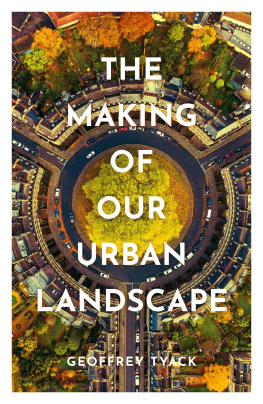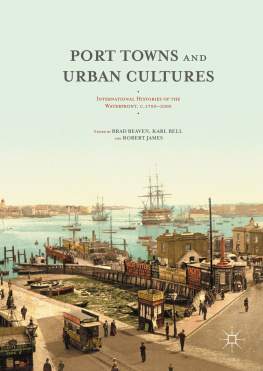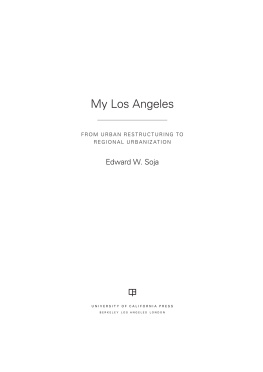STUDIES IN WELSH HISTORY
Editors
RALPH A. GRIFFITHS CHRIS WILLIAMS ERYN M. WHITE
INTELLIGENT TOWN
AN URBAN HISTORY OF SWANSEA, 17801855
INTELLIGENT TOWN
AN URBAN HISTORY OF SWANSEA, 17801855
by
LOUISE MISKELL
Published on behalf of the History and Law Committee of the Board of Celtic Studies
Louise Miskell, 2006
British Library Cataloguing-in-Publication Data
A catalogue record for this book is available from the British Library.
ISBN 978-0-70832-510-0
eISBN 978-1-78683-557-4
All rights reserved. No part of this book may be reproduced, stored in a retrieval system, or transmitted, in any form or by any means, electronic, mechanical, photocopying, recording or otherwise, without clearance from the University of Wales Press, King Edward VII Avenue, Cardiff, Wales, CF10 3NS. www.uwp.co.uk
The right of Louise Miskell to be identified as author of this work has been asserted by her in accordance with sections 77 and 78 of the Copyright, Designs and Patents Act 1988.
The publisher has no responsibility for the persistence or accuracy of URLs for any external or third-party internet websites referred to in this book, and does not guarantee that any content on such websites is, or will remain, accurate or appropriate.
Cover image: Panoramic view of Swansea from Mount Pleasant c.1850. By kind permission of the City and County of Swansea: Swansea Museum
Since the foundation of the series in 1977, the study of Waless history has attracted growing attention among historians internationally and continues to enjoy a vigorous popularity. Not only are approaches, both traditional and new, to the study of history in general being successfully applied in a Welsh context, but Waless historical experience is increasingly appreciated by writers on British, European and world history. These advances have been especially marked in the university institutions in Wales itself.
In order to make more widely available the conclusions of original research, much of it of limited accessibility in postgraduate dissertations and theses, in 1977 the History and Law Committee of the Board of Celtic Studies inaugurated this series of monographs, Studies in Welsh History. It was anticipated that many of the volumes would originate in research conducted in the University of Wales or under the auspices of the Board of Celtic Studies, and so it has proved. But the series does not exclude significant contributions made by researchers in other universities and elsewhere. Its primary aim is to serve historical scholarship and to encourage the study of Welsh history.
The writing of this book was made possible by an innovative collaboration between the University of Wales Swansea, and the National Museums and Galleries of Wales. Beginning in September 2000, these two institutions jointly funded a research post in the department of history at Swansea. It was an initiative inspired by Swanseas choice as the location for a new national museum charting Waless industrial and maritime past. As the person appointed to this new post, I was presented with an opportunity to conduct the research on which this book is based. It would not have been written without the foresight and commitment of the two chief collaborators, Dr David Jenkins, curator of the national museums industrial and maritime collections, and Professor Ralph Griffiths of the history department at Swansea.
My own route towards the writing of an urban history of Swansea originated much earlier. As an undergraduate at Aberystwyth in 1989, I was fortunate enough to come under the tutelage of a succession of superb historians, including Professor Rees Davies, Professor Geraint H. Jenkins, Dr John Davies and later, as a postgraduate, Dr Paul OLeary. Along with their colleagues in the department of history and Welsh history, they provided me with encouragement and rigorous academic scrutiny whenever it was needed. In 1997 I became a research assistant at the University of Dundee where I began work on a research project that was specifically urban in focus. Professor Chris Whatley, Dr Bob Harris and Professor Charles McKean all provided invaluable guidance as I began to familiarize myself with the Scottish urban landscape and, inevitably, to draw comparisons with the history of Welsh towns. I owe my former colleagues in Dundee a tremendous debt of thanks. Their influences are clear for all to see in this book.
Since joining the department of history at Swansea in September 2000 and embarking on the research for this book, I have benefited from advice and support from numerous different quarters. My departmental colleagues, especially Professor David Howell, have been a constant source of encouragement. Staff at the university library and archives, in particular the university archivist, Elisabeth Bennett, and the history subject librarians, Dr Ian Glen and Bernadette Matthias, have been unfailingly cooperative. Staff at the West Glamorgan Archives Service, especially Kim Collis and Andrew Dulley, were extremely helpful during the months spent wading through volumes of corporation minutes. Elsewhere in Swansea, members of staff at the Glynn Vivian Art Gallery, particularly Jenni Spencer-Davies and Ellie Dawkins, and at Swansea Museum, Bernice Cardy and Bernard Morris, have given generously of their time and expertise in helping me to locate suitable illustrative material. Other Swansea experts who have kindly shared their knowledge with me include Gerald Gabb, Dr Owen Roberts and Dr Robert Anthony.
My frequent research visits to other institutions, principally the National Library of Wales and the National Archives at Kew, were made easier by the efficiency and friendliness of the staff who dealt with my queries, and I am especially grateful to Jenny Mountain at the Bank of England Archives for her interest in, and assistance with, my research. During the writing of the book, the series editors have kept an attentive eye on my progress, and I am also indebted to the generosity of Neil Evans who undertook to read and comment on an earlier draft of the text. The finished product would have been much the poorer without his observations.
My final thanks are reserved for the people who make up my personal support networks. They have, some of them unknowingly, helped me through the inevitable ups and downs of a lengthy research project. They are my family in Port Talbot, Mike and our neighbours in Aberdare, and my running friends in Swansea. I am grateful to them all.
Louise Miskell
BAAS British Association for the Advancement of Science
BoEA Bank of England Archives
CUHB Cambridge Urban History of Britain
GCH Glamorgan County History
GGF George Grant Francis collection
GRO Glamorgan Record Office
NLW National Library of Wales
PP Parliamentary Papers
RISW Royal Institution of South Wales
SCL Swansea Central Library
TNA The National Archives
UWSA University of Wales Swansea Archives
WCR William Cyril Rogers collection
WGAS West Glamorgan Archive Service
WHR Welsh History Review
YIM Yorkshire Imperial Metals









